| |
|
|
36.
| The Blinding Light |
| |

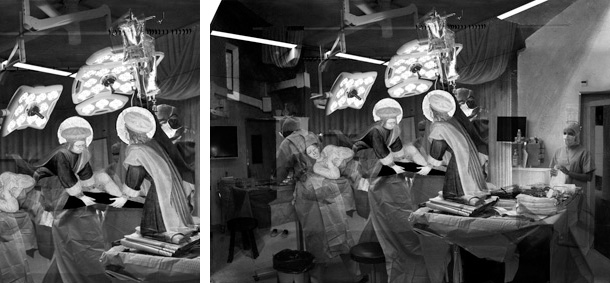
Serie started in 2013, inkjet print on fine art paper, 47 x 70 cm and 180 x 268 cm.
Exhibition view from Transition State, officine dell'Immagine, 2017, Milan.
Courtesy of the artist and Ceysson & Bénétière, Paris.
Ed. of 5 + 2 A.P.
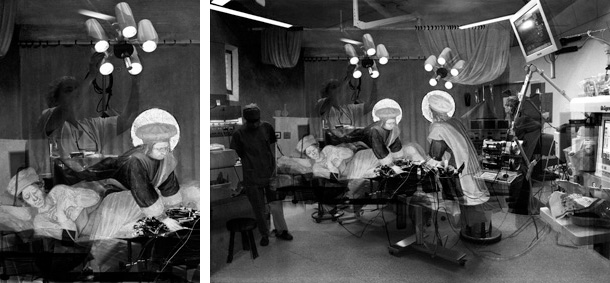
Serie started in 2013, inkjet print on fine art paper, 47 x 70 cm and 180 x 268 cm..
Exhibition view from Transition State, officine dell'Immagine, 2017, Milan.
Courtesy of the artist and Analix Forever and officine dell'immagine
Ed. of 5 + 2 A.P.
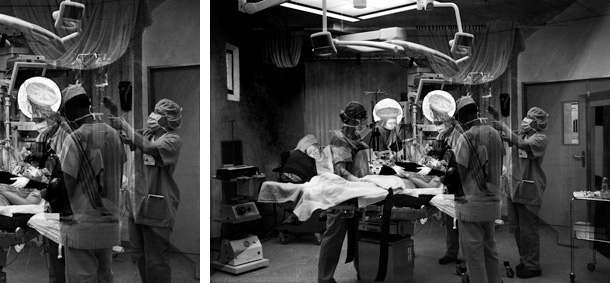
Serie started in 2013, inkjet print on fine art paper, 47 x 70 cm and 180 x 268 cm..
Exhibition view from Darkening Process, MMP+, Marrakech, 2016
Courtesy of the artist and Ceysson & Bénétière, Paris.
Ed. of 5 + 2 A.P.
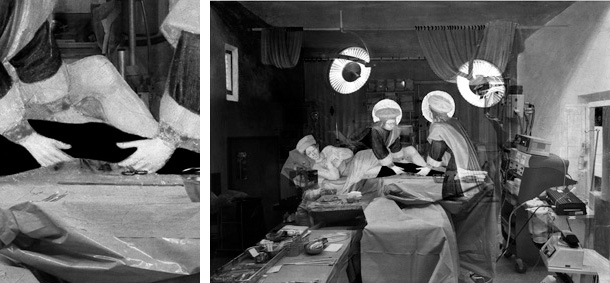
Serie started in 2013, inkjet print on fine art paper, 47 x 70 cm and 180 x 268 cm..
Exhibition view from Under the Skin, Maisons des Arts du Grütli, 2017, Geneva.
Courtesy of the artist and Analix Forever, Geneva.
Ed. of 5 + 2 A.P.
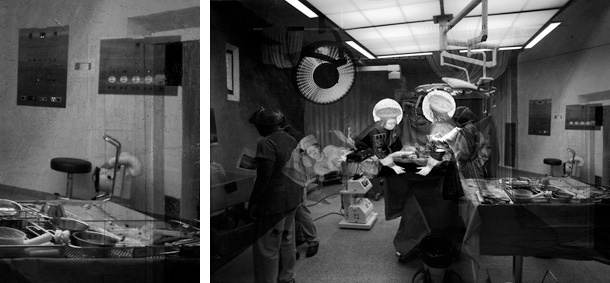
Serie started in 2013, inkjet print on fine art paper, 47 x 70 cm and 180 x 268 cm..
Exhibition view from Darkening Process, MMP+, Marrakech, 2016
Courtesy of the artist and Ceysson & Bénétière, Paris.
Ed. of 5 + 2 A.P.
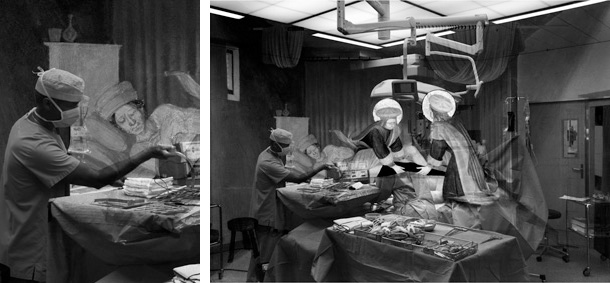
Serie started in 2013, inkjet print on fine art paper, 47 x 70 cm and 180 x 268 cm..
Exhibition view from Transition State, officine dell'Immagine, 2017, Milan.
Courtesy of the artist and Ceysson & Bénétière, Paris.
Ed. of 5 + 2 A.P.
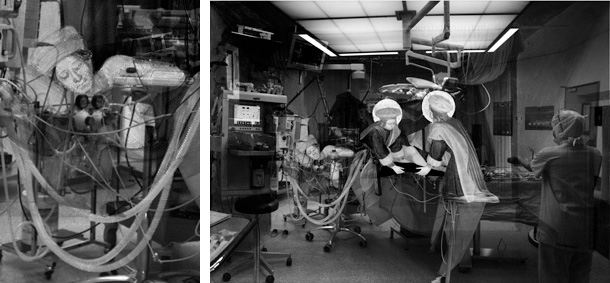
Serie started in 2013, inkjet print on fine art paper, 47 x 70 cm and 180 x 268 cm..
Exhibition view from Survival Signs, Jane Lombard Gallery, 2017, New York.
Courtesy of the artist and Jane Lombard Gallery, New York.
Ed. of 5 + 2 A.P.
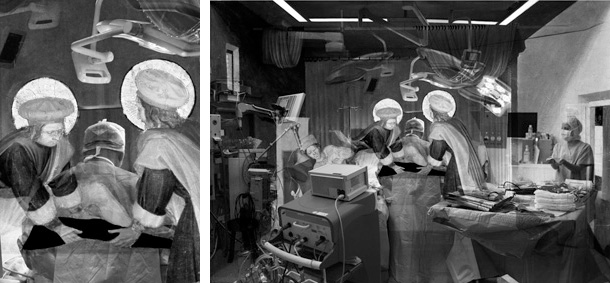
Serie started in 2013, inkjet print on fine art paper, 47 x 70 cm and 180 x 268 cm..
Exhibition view from Survival Signs, Jane Lombard Gallery, 2017, New York.
Courtesy of the artist and Jane Lombard Gallery, New York.
Ed. of 5 + 2 A.P.
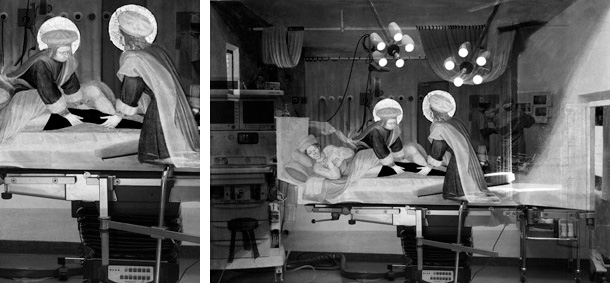
Serie started in 2013, inkjet print on fine art paper, 47 x 70 cm and 180 x 268 cm..
Courtesy of the artist and Lawrie Shabibi, Dubai.
Ed. of 5 + 2 A.P.
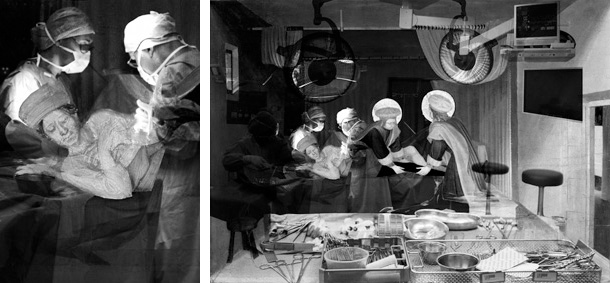
Serie started in 2013, inkjet print on fine art paper, 47 x 70 cm and 180 x 268 cm..
Exhibition view from Darkening Process, MMP+, Marrakech, 2016
Courtesy of the artist and Lawrie Shabibi, Dubai.
Ed. of 5 + 2 A.P.
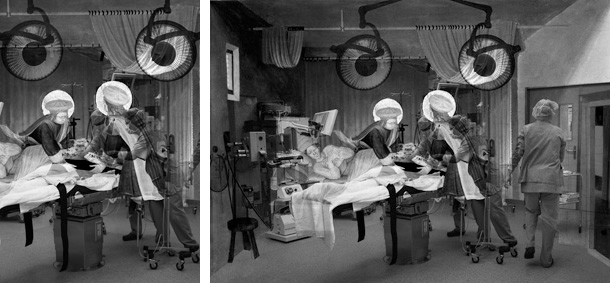
Serie started in 2013, inkjet print on fine art paper, 47 x 70 cm and 180 x 268 cm..
Exhibition view from Darkening Process, MMP+, Marrakech, 2016
Courtesy of the artist and Art Front Gallery, Tokyo.
Ed. of 5 + 2 A.P.
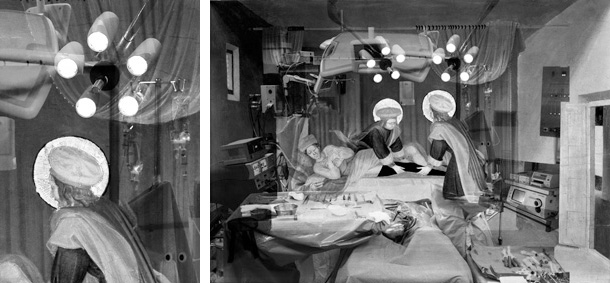
Serie started in 2013, inkjet print on fine art paper, 47 x 70 cm and 180 x 268 cm..
Exhibition view from Darkening Process, MMP+, Marrakech, 2016
Courtesy of the artist and Art Front Gallery, Tokyo.
Ed. of 5 + 2 A.P.
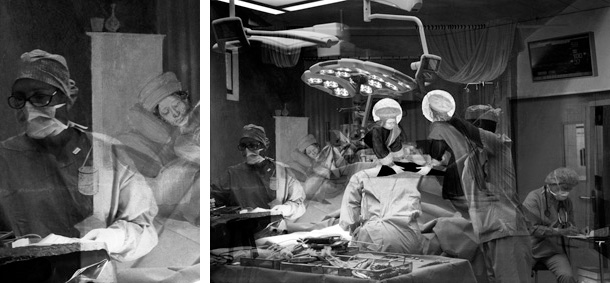
Serie started in 2013, inkjet print on fine art paper, 47 x 70 cm and 180 x 268 cm..
Exhibition view from Darkening Process, MMP+, Marrakech, 2016
Courtesy of the artist and Art Front Gallery, Tokyo.
Ed. of 5 + 2 A.P.
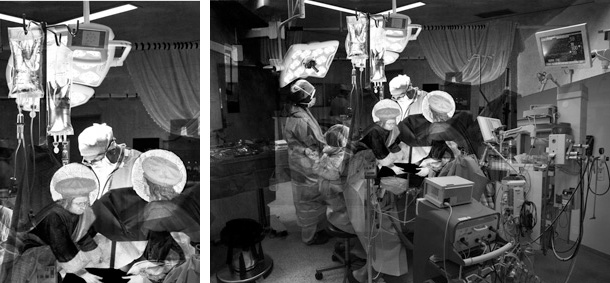
Serie started in 2013, inkjet print on fine art paper, 47 x 70 cm and 180 x 268 cm..
Exhibition view from Transition State, officine dell'Immagine, 2017, Milan.
Courtesy of the artist and Ceysson & Bénétière, Paris.
Ed. of 5 + 2 A.P.
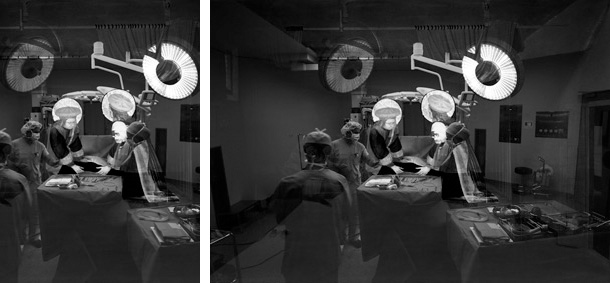
Serie started in 2013, inkjet print on fine art paper, 47 x 70 cm and 180 x 268 cm..
Exhibition view from Darkening Process, MMP+, Marrakech, 2016
Courtesy of the artist and Ceysson & Bénétière, Paris.
Ed. of 5 + 2 A.P.
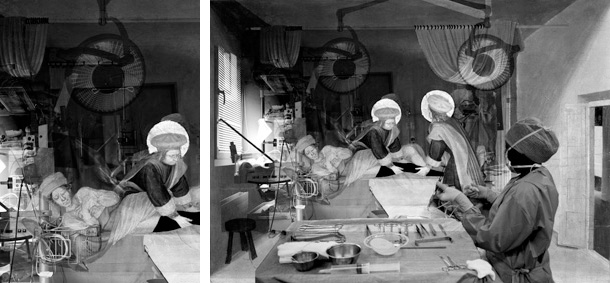
Serie started in 2013, inkjet print on fine art paper, 47 x 70 cm and 180 x 268 cm..
Exhibition view from Transition State, officine dell'Immagine, 2017, Milan.
Courtesy of the artist and Ceysson & Bénétière, Paris.
Ed. of 5 + 2 A.P.
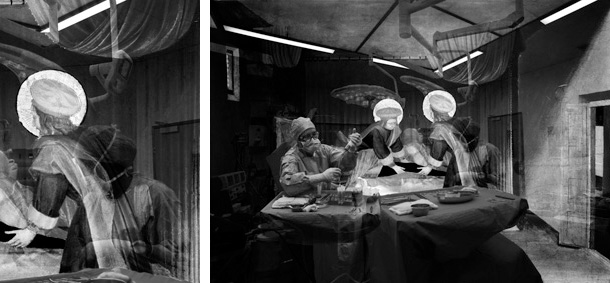
Serie started in 2013, inkjet print on fine art paper, 47 x 70 cm and 180 x 268 cm..
Exhibition view from Transition State, officine dell'Immagine, 2017, Milan.
Courtesy of the artist and Ceysson & Bénétière, Paris.
Ed. of 5 + 2 A.P.
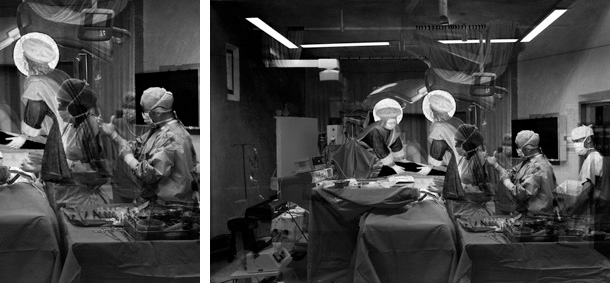
Serie started in 2013, inkjet print on fine art paper, 47 x 70 cm and 180 x 268 cm..
Exhibition view from Darkening Process, MMP+, Marrakech, 2016
Courtesy of the artist and Jane Lombard Gallery, New York.
Ed. of 5 + 2 A.P.
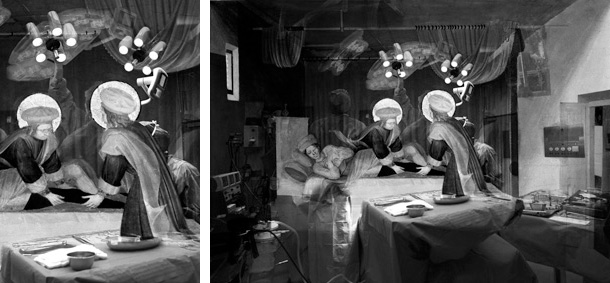
Serie started in 2013, inkjet print on fine art paper, 47 x 70 cm and 180 x 268 cm..
Exhibition view from Darkening Process, MMP+, Marrakech, 2016
Courtesy of the artist and Ceysson & Bénétière, Paris.
Ed. of 5 + 2 A.P.
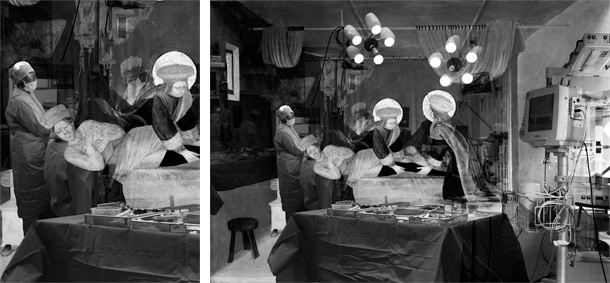
Serie started in 2013, inkjet print on fine art paper, 47 x 70 cm and 180 x 268 cm..
Exhibition view from Darkening Process, MMP+, Marrakech, 2016
Courtesy of the artist and Ceysson & Bénétière, Paris.
Ed. of 5 + 2 A.P.
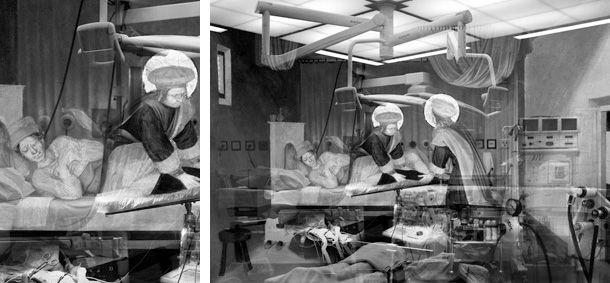
Serie started in 2013, inkjet print on fine art paper, 47 x 70 cm and 180 x 268 cm..
Exhibition view from Transition State, officine dell'Immagine, 2017, Milan.
Courtesy of the artist and Ceysson & Bénétière, Paris.
Ed. of 5 + 2 A.P.
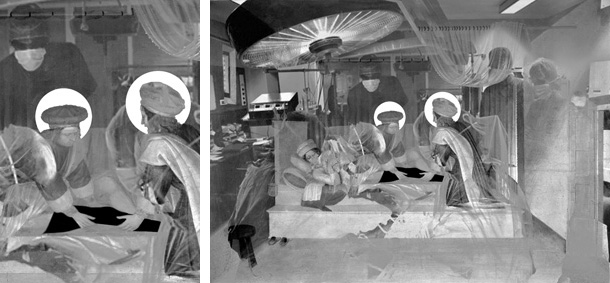
Serie started in 2013, print on mirror, 103 x 150 cm.
Exhibition view from Darkening Process, MMP+, Marrakech, 2016
Courtesy of the artist and Ceysson & Bénétière, Paris.
Ed. of 5 + 2 A.P.
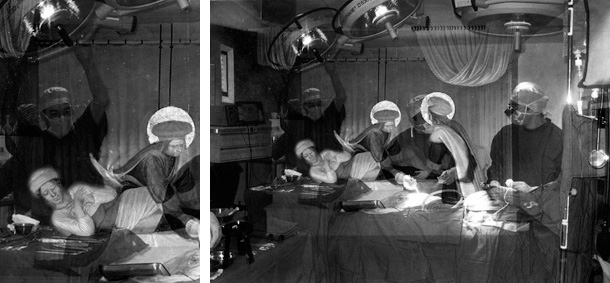
Serie started in 2013, inkjet print on fine art paper, 47 x 70 cm and 180 x 268 cm..
Exhibition view from Darkening Process, MMP+, Marrakech, 2016
Courtesy of the artist and Analix Forever, Geneva.
Ed. of 5 + 2 A.P.
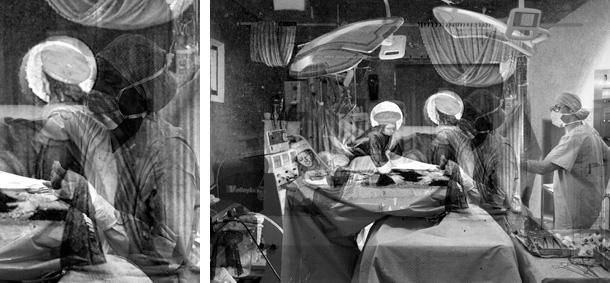
Serie started in 2013, inkjet print on fine art paper, 47 x 70 cm and 180 x 268 cm..
Exhibition view from Darkening Process, MMP+, Marrakech, 2016
Courtesy of the artist and Analix Forever, Geneva.
Ed. of 5 + 2 A.P.
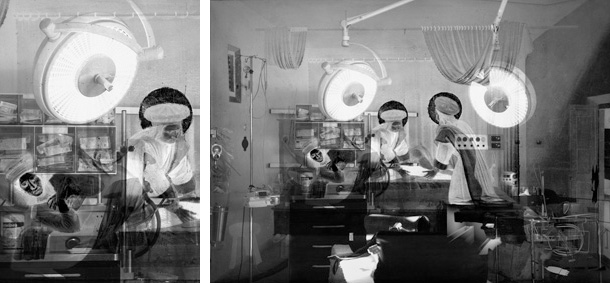
Serie started in 2013, inkjet print on fine art paper, 47 x 70 cm and 180 x 268 cm..
Exhibition view from Darkening Process, MMP+, Marrakech, 2016
Courtesy of the artist and Analix Forever, Geneva.
Ed. of 5 + 2 A.P.
'' mounir fatmi's artworks include black and white photographs, along with formal experiments with the medium itself - like 'The Blinding Light',
an artwork that combines images from the Fra Angelico painting 'The Healing of Deacon Justinian' with photographs of a modern-day surgery room. ''
Christopher D. Shea, The New Work Times, March 2016
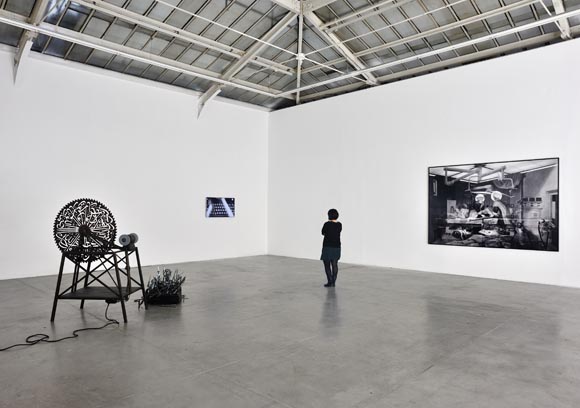
The Blinding Light
Exhibition view of They were blind, they only saw images, Yvon Lambert, 2014, Paris.
Courtesy of the artist.
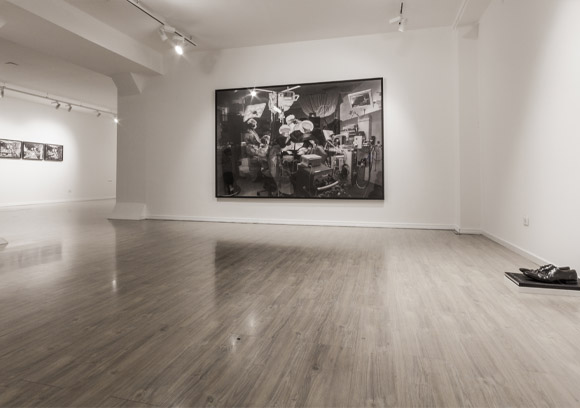
The Blinding Light
Exhibition view from Transition State, officine dell'Immagine, 2017, Milan.
Courtesy of the artist.
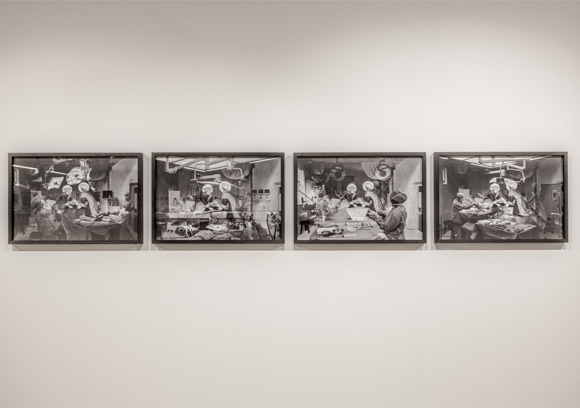
The Blinding Light
Exhibition view from Transition State, officine dell'Immagine, 2017, Milan.
Courtesy of the artist.
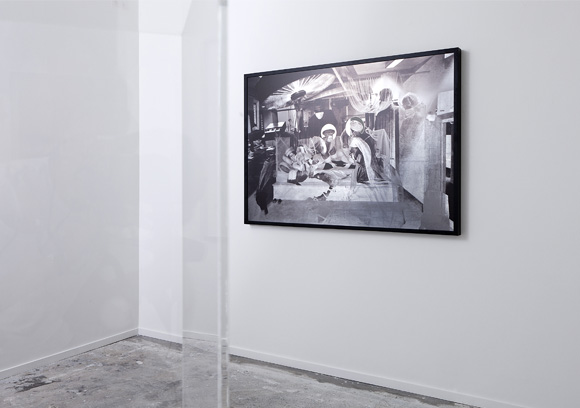
The Blinding Light
Exhibition view from Intersections, Keitelman Gallery, 2013, Brussels.
Courtesy of the artist.
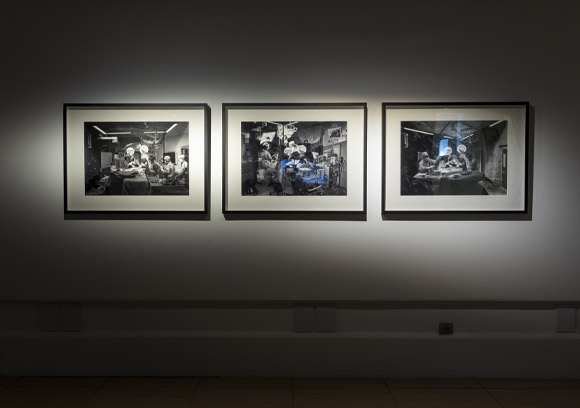
The Blinding Light
Exhibition view from The Blinding Light, Casa Arabe, 2022, Madrid.
Courtesy of the artist.
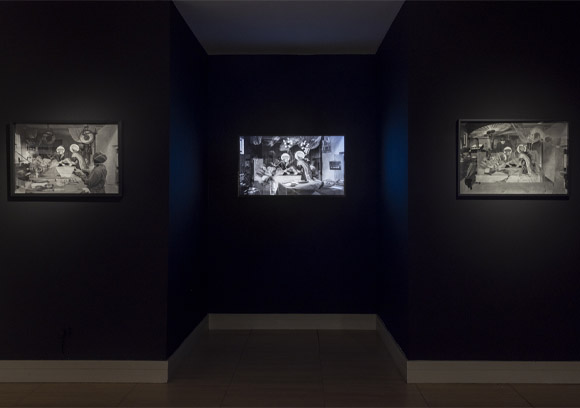
The Blinding Light
Exhibition view from The Blinding Light, Casa Arabe, 2022, Madrid.
Courtesy of the artist.
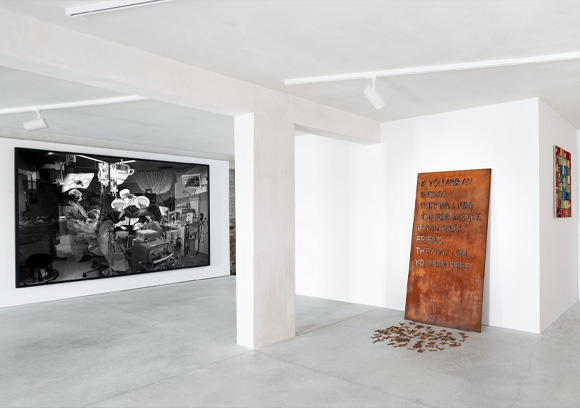
The Blinding Light
Exhibition view from Embodied Echoes: Stories of the Foreign Soul, Piero Atchugarry Gallery, 2024, Venice.
Courtesy of the artist.
|
|
|
|
|
| Collection of Miniature Museum Ria and Lex Daniels, The Hague
|
Texte Le Miracle de la jambe noire, entre discours médical et fascination artistique par Pierre-Yves Theler
The Blinding Light est un projet de mounir fatmi dont les différentes œuvres sont inspirées d’une scène miraculeuse peinte par Fra Angelico. L’œuvre en question, le retable de Saint Marc (1440), exposée au musée nationale San Marco à Florence, présente sur sa prédelle les différents miracles faits par deux saints, Côme et Damien. Saints patrons des chirurgiens et pharmaciens, ces deux frères jumeaux seraient nés en Arabie et auraient été convertis au christianisme durant leur jeunesse.
D’après la Catholic Encyclopedia, ils n’acceptaient aucun paiement pour leurs services, ce qui leur valut le surnom d’anargyroi c’est-à-dire sans argent. Ils attirèrent ainsi un grand nombre de gens à la foi chrétienne. Pendant les persécutions de Dioclétien en l’an 287, Côme et Damien furent arrêtés sur l’ordre du Préfet de Cilicie, un certain Lysias. Il leur ordonna d’abjurer sous la torture, mais ils restèrent fidèles à leur foi en dépit de toute une série de tortures affreuses auxquelles ils restèrent insensibles. Ils sortent de la mer, bien que chargé de chaînes. Sur le pilori, ils ne sentent pas les coups de bourreaux qui tombent épuisés de fatigue. Les flammes d’un bûcher les épargnent et vont brûler les spectateurs païens. Flèches et pierres font demi-tour et viennent blesser ceux qui les lancent. Finalement ils furent décapités avec leurs trois frères cadets.
Le miracle choisit par mounir fatmi s’intitule La guérison du diacre Justinien. Dans cette scène, les frères d’origine arabes réalisant un miracle posthume par la greffe de la jambe d’un maure éthiopien qui venait d’être enseveli au cimetière de Saint- Pierre au diacre. Cette scène évoque le métissage d’un corps blanc et d’un membre noir, celle d’un vivant et d’un mort en interrogeant finalement la notion de race et l’hybridation de l’identité.
Dans la première série de photomontages Blinding Light de 2013, sont superposés à cette scène miraculeuse différents clichés montrant un bloc opératoire où apparait la technologie et l’hygiénisme. Tout comme dans la vidéo éponyme, les médecins côtoient les deux saints formant un seul groupe de travail. Ainsi, les fantômes et les vivants présents dans une autre forme de réalité, une temporalité fantasmée et tout aussi miraculeuse que le texte religieux.
En 2011, une vidéo intitulée La Jambe Noir de l’Ange, mounir fatmi s’intéresse particulièrement à cette greffe inhabituelle. Sur une bande son aigu et fantomatique, se succèdent des radiographies de l’œuvre. Décomposant, recomposant et superposant les différents éléments de la scène, la vidéo les montre dans un fondu enchainé ingénieux. Comme un négatif de cette vidéo, une autre du même nom reprend la même structure en inversant le noir et le blanc des images. Jouant ainsi sur les contrastes, cette vidéo met plus que jamais en avant l’acte de greffe et fait écho à l’ensemble de l’œuvre de mounir fatmi en évoquant les questions d’identité et de métissage.
De plus, dans la vidéo de 2014 Blinding Light, la superposition des clichés de bloc opératoires contemporains et de l’œuvre de Fra Angelico donne une nouvelle dimension. Surenchérissant sur cette idée d’hybridation, cette vidéo opère un jeu habile en mariant la renaissance à l’hypermodernité. Cette ellipse temporelle, superposant les espaces temps, fait apparaître la technologie, l’anesthésie dans un monde fait auparavant de miracles divins. Les personnages du tableau deviennent alors des fantômes. Ce décalage contraint le spectateur à opérer un aller-retour mental entre les deux époques. Ainsi, la superposition des époques met en avant l’idée qu’un miracle religieux est désormais tout à fait réalisable de nos jours.
mounir fatmi tente ainsi de croiser de manière inattendue deux sphères de croyances bien souvent vues comme antagonistes. D’une part, celle de la science, de l’ordre, de la raison et du concret ; et d’autre part, celle de la religion où il est question de foi, de miracle et du sacré.
Studio Fatmi, Decembre 2016. |
|
The Blinding Light is a project by mounir fatmi whose various pieces were inspired by a miraculous scene painted by Fra Angelico. The work in question, the altarpiece of Saint Mark (1440), exhibited at the San Marco national museum in Florence, shows in its predella the miracles performed by two saints, Cosmas and Damian. Patron saints of surgeons and pharmacists, these twin brothers were supposedly born in Arabia and converted to Christianity in their youth.
According to the Catholic Encyclopedia, they accepted no payment for their services, which led them to being named Anargyroi, or “without money”. Thus, they attracted a great number of people to the Christian faith. During the persecutions of Diocletian in 287 AD, Cosmas and Damian were arrested following the orders of the prefect of Cilicia, Lysias. He ordered them to abjure, but they remained true to their faith and were insensitive to the atrocious torture they were submitted to. They walk out of the sea despite the chains burdening them. On the pillory, they don’t feel the blows of executioners who end up collapsing from exhaustion. The flames of the stake spare them, burning the pagan audience instead. Arrows and stones revert their course to hurt those who threw them. In the end, the saints were decapitated, along with their three younger brothers.
The miracle chosen by mounir fatmi is called The Healing of Deacon Justinian. In this scene, the Arabian brothers perform a posthumous miracle when they graft on the deacon the leg of an Ethiopian man who had just been interred in Saint Peter’s cemetery. This scene evokes the mixing of a white body with a black limb, of the living with the dead and thus questions notions of race, hybridization and identity.
In the first series of Blinding Light photomontages from 2013, various photographs showing an operating room with all its technology and hygiene are superimposed on this miraculous scene. As in the video of the same name, doctors stand alongside the two saints, forming one same workgroup. In this way, ghosts and living people are present in another form of reality, a fantasized temporality that is just as miraculous as a religious text.
In 2011, in a video entitled The Black Leg of the Angel, mounir fatmi took a particular interest in this unusual graft. Over a high-pitched and ghostly soundtrack, x-rays of the painting are shown. Decomposing, recomposing and superimposing different elements of the scene, the video shows them ingenuously blurred together. As a negative of this video, another one with the same title follows the same structure but inverts black and white in the images. Playing on contrasts, that video highlights more than ever the act of grafting and echoes mounir fatmi’s entire work by alluding to questions of identity and cross-breeding.
Furthermore, in the 2014 Blinding Light video, the superimposition of contemporary operation room photos with Fra Angelico’s work brings in an additional dimension. Adding to the idea of hybridization, the video creates a clever association between the Renaissance and hyper-modernity. This temporal ellipsis, superimposing different times and spaces, brings technology and anesthetics in a world that used to be governed by divine miracles. The characters in the painting thus become ghosts. Such a discrepancy forces the viewer to mentally go back and forth between the two eras. In this way, the superimposition of epochs brings forth the idea that a religious miracle is perfectly feasible in this day and age.
mounir fatmi attempts here to combine in an unexpected way two spheres of beliefs that are often seen as antagonistic. On one side, science, order, reason and concreteness; on the other, religion, with its notions of faith, miracles and the sacred.
Studio Fatmi, December 2016. |
|
|
|
|